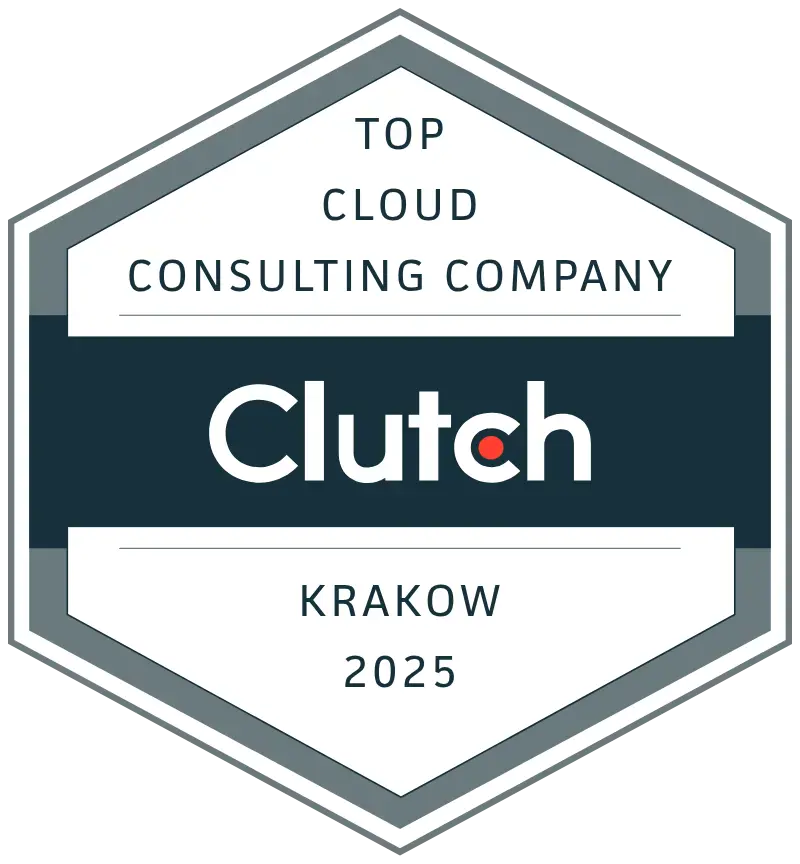How Can Blockchain Help Your Business Case #3: Mobility
Tue, Jul 15, 2025 •12 min read
Category: Blockchain
The mobility sector is experiencing a digital revolution that’s reshaping how we travel, pay, and interact with transportation systems. As autonomous vehicles, smart cities, and connected infrastructure become a reality, traditional mobility businesses face mounting pressure to innovate or risk obsolescence. Enter blockchain, a promising technology that’s already transforming how mobility companies operate, from securing autonomous vehicle communication to enabling fractional ownership of transportation assets. Blockchain technology originated with digital currency, such as Bitcoin, as a peer-to-peer electronic cash system. This innovation underpins numerous advancements in mobility by enabling secure and transparent transactions, as well as supporting blockchain-based business models.
The blockchain in the automotive market is projected to reach $2.3 billion by 2030, driven by the urgent need for secure, interoperable, and transparent transportation solutions. Major players, including BMW, Ford, and Uber, are already implementing blockchain solutions to address a range of issues, from supply chain transparency to automated payment processing.
But how exactly can blockchain technologies help your mobility business? This comprehensive guide explores the transformative potential of blockchain technologies in transportation, providing practical insights for business leaders ready to leverage this revolutionary technology.
Key Takeaways
- Blockchain transforms mobility by enabling secure vehicle-to-vehicle communication and autonomous payment systems
- Smart contracts automate ride-sharing payments, tolls, and parking fees, reducing transaction costs by up to 30%
- Decentralized identity management allows seamless cross-platform mobility services without multiple registrations
- Supply chain transparency ensures authentic vehicle parts and maintenance records, improving safety standards
- Real-time data sharing between mobility providers enhances route optimization and reduces urban congestion
- Tokenization of mobility assets creates new revenue streams through fractional ownership of vehicles and infrastructure
Understanding Blockchain in the Mobility Sector
Blockchain stands as a decentralized, distributed ledger that records transactions across multiple computers, ensuring immutability, transparency, and trustless automation. Blockchain can also be described as a distributed database, shared across network nodes, which ensures data immutability and decentralization. Unlike traditional databases controlled by a central authority, blockchain networks operate through consensus mechanisms that validate every transaction across the network. Each node maintains a copy of the blockchain ledger and participates in validating transactions, ensuring consistency and security across the network.
The mobility industry faces significant challenges that blockchain technology can address:
Fragmented Payment Systems: Current mobility ecosystems require separate payment methods for different services, one app for ride-sharing, another for parking, yet another for public transit. This fragmentation creates friction and poor user experiences.
Lack of Interoperability: Vehicles from different manufacturers struggle to communicate securely, limiting the potential for collaborative autonomous driving systems and shared traffic data.
Trust and Security Issues: Centralized systems create single points of failure, making them vulnerable to cyber attacks and data breaches that could compromise sensitive user information and vehicle safety systems.
Opaque Supply Chains: The automotive industry struggles with counterfeit parts and unclear component histories, creating safety risks and compliance challenges.
Blockchain solves these problems by providing a secure, transparent, and interoperable foundation for mobility services. The transaction history stored on the blockchain is immutable and accessible, allowing all participants to verify and trace past transactions. The technology eliminates intermediaries, reduces costs, and creates new possibilities for collaboration between previously incompatible systems.
The numbers speak for themselves: blockchain applications in mobility can reduce payment processing costs by up to 30% while improving supply chain transparency by 70%. For mobility businesses, these improvements translate directly to enhanced profitability and customer satisfaction.
Blockchain Infrastructure for Mobility
Blockchain technology is revolutionizing the mobility sector by establishing a robust and secure foundation for data management and transaction processing. At the heart of this transformation is blockchain infrastructure, a decentralized network built on advanced blockchain platforms that enable seamless communication and collaboration among diverse mobility stakeholders. By implementing blockchain, companies can automate complex processes using smart contracts, which execute transactions and agreements automatically when predefined conditions are met. This not only streamlines processes but also significantly reduces transaction costs by eliminating the need for intermediaries and manual reconciliation.
A well-designed blockchain infrastructure ensures that every transaction is recorded immutably, providing a transparent audit trail that supports regulatory compliance and enhances trust among users, regulators, and partners. Mobility businesses benefit from faster settlement times, reduced operational overhead, and improved data security, all while maintaining compliance with evolving industry regulations. As the sector continues to evolve, investing in the right blockchain platform and infrastructure is essential for companies looking to stay competitive, deliver superior user experiences, and unlock new revenue streams.
Key Blockchain Applications in Mobility
Real-world blockchain implementations are already demonstrating tangible benefits across the mobility sector. Automotive giants like BMW have tested blockchain for vehicle identity management, while Ford has explored smart contract applications for autonomous vehicle coordination. Uber and other ride-hailing companies are investigating blockchain solutions for automated payments and decentralized ride-matching systems. By implementing blockchain, companies can automate complex processes using smart contracts, which execute transactions and agreements automatically when predefined conditions are met. These smart contracts play a crucial role in executing transactions directly and securely without intermediaries, streamlining operations, reducing costs, and improving transparency.
The integration with IoT devices and autonomous vehicles creates particularly compelling opportunities. Blockchain infrastructure can securely manage the massive amounts of data generated by connected vehicles, enabling real-time coordination between vehicles, traffic systems, and mobility service providers.
Autonomous Vehicle Communication
Vehicle-to-vehicle (V2V) and vehicle-to-infrastructure (V2I) communication represents one of blockchain’s most critical applications in mobility. Autonomous vehicles must exchange real-time data about location, speed, and intentions to operate safely, but this communication must be absolutely secure and trustworthy.
Traditional centralized systems create vulnerabilities that could be exploited by malicious actors seeking to disrupt traffic or cause accidents. A compromised central server could send false information to multiple vehicles simultaneously, creating widespread chaos.
Blockchain networks solve this problem through cryptographic security and distributed consensus. When a vehicle shares data about emergency braking or hazard detection, the blockchain network validates this information before distributing it to other vehicles. This creates trust between vehicles from different manufacturers, enabling cross-brand autonomous networks that wouldn’t be possible with proprietary systems.
Real-time traffic data sharing becomes particularly powerful when vehicles can trust the information they receive. Traffic optimization algorithms can leverage blockchain records to make routing decisions based on verified, tamper-proof data from thousands of vehicles across the network.
Smart Mobility Payments with Smart Contracts
Payment processing represents one of the most immediate opportunities for blockchain to transform mobility businesses. Smart contracts can automate toll payments without requiring vehicles to stop at toll booths, with fees dynamically adjusted based on traffic congestion or time of day.
For ride-sharing services, blockchain eliminates the need for centralized payment processors, reducing transaction fees and enabling instant settlements between drivers and passengers. This peer-to-peer payment model can cut transaction costs by 30% compared to traditional credit card processing, while providing transparent, auditable transaction receipts for all parties. Blockchain ensures secure transactions by using cryptographic validation and maintaining immutable records, which guarantees the integrity and authenticity of every payment.
Dynamic parking pricing becomes feasible through blockchain-based microtransactions that adjust costs based on real-time demand and supply. Cross-border mobility payments present another significant opportunity, as digital currencies enable frictionless international transactions without currency conversion delays or banking intermediaries.
Financial institutions are taking notice of these developments, with commercial banks exploring partnerships with mobility providers to offer blockchain-based payment solutions that serve both domestic and international travelers.
Digital Identity and Access Management
The concept of a single digital identity for mobility services addresses one of the most frustrating aspects of modern transportation: the need to register and maintain accounts across dozens of different mobility platforms.
Blockchain-based digital identities allow users to access bikes, scooters, car rentals, and public transport systems without repeated registrations or scattered credentials. Identity verification becomes seamless while maintaining user privacy through cryptographic protection of sensitive data.
For businesses, this unified approach to digital identities reduces customer acquisition costs and improves user experience. Driver and vehicle verification processes become more efficient when authorities can access real-time, tamper-proof records of licenses, registrations, and insurance status stored on blockchain platforms.
Keyless access systems leveraging smart contracts eliminate the need for physical keys or cards, reducing theft risk while providing detailed audit trails of vehicle access. Users can unlock and operate vehicles using cryptographically secured digital credentials that can’t be duplicated or stolen. Access to these credentials is protected by a private key, ensuring that only authorized users can access or control the vehicle.
Supply Chain and Vehicle Lifecycle Management
Supply chain management in the automotive industry presents enormous opportunities for blockchain implementation. The global problem of counterfeit automotive parts costs the industry billions annually while creating serious safety risks for consumers.
Blockchain enables end-to-end traceability of vehicle components from manufacturing through disposal. Every part receives a unique digital identity that tracks its journey through the supply chain, making it virtually impossible to introduce counterfeit components without detection.
Immutable maintenance records stored on blockchain platforms provide complete vehicle histories accessible to owners, mechanics, insurance companies, and regulators. Blockchain platforms store data securely and immutably, ensuring that maintenance records remain accessible and reliable over the long term.
Smart contracts can automate warranty claims and insurance processes by utilizing IoT sensor data as proof of eligibility. When a component fails within its warranty period, the smart contract automatically processes the claim based on verified maintenance records and sensor data, thereby eliminating lengthy manual review processes. These automated workflows streamline processes, reduce administrative overhead, and improve efficiency for all stakeholders.
Vehicle history transparency benefits both buyers and sellers in the used car market. Buyers can verify complete maintenance records, accident history, and component authenticity before purchase, while sellers can command higher prices for vehicles with verified maintenance histories.
Shared Mobility and Asset Tokenization
Fractional ownership represents one of blockchain’s most innovative applications in mobility. Digital assets in the form of tokens enable shared investment in vehicles, fleets, or charging infrastructure, opening new financial models that weren’t previously feasible.
Peer-to-peer car sharing platforms can use blockchain to automate insurance verification and payment processing for each rental transaction. Businesses can integrate blockchain into their existing systems to streamline these processes, ensuring seamless automation and reducing manual intervention. Smart contracts ensure all participants are properly covered and payments are processed automatically, reducing disputes and administrative overhead.
Asset management becomes more sophisticated when physical mobility assets have blockchain-based digital twins that consolidate identity, usage, and performance data. Integrating blockchain with IoT and mobility platforms enables unified data management and operational efficiency, supporting new business models like mobility-as-a-service (MaaS) platforms that coordinate diverse transport options through unified blockchain infrastructure.
Revenue-sharing models for mobility infrastructure investments become transparent and automated through tokenization. Investors who contribute to charging station networks or vehicle fleets receive tokens that entitle them to proportional revenue shares, with distributions handled automatically by smart contracts.
The Ethereum blockchain and other public blockchains enable global participation in these tokenized mobility investments, allowing open participation by anyone. In contrast, private blockchains restrict access to authorized users and can be used for enterprise solutions requiring more controlled access. Selecting the right enterprise blockchain solution is crucial for organizations seeking to balance transparency, security, and scalability.
Blockchain Ecosystem in Mobility
The blockchain ecosystem in mobility is a dynamic and interconnected network that brings together mobility companies, financial institutions, regulatory agencies, and technology providers to create a more efficient and transparent transportation landscape. This ecosystem thrives on collaboration, with each participant playing a vital role in the development, deployment, and scaling of blockchain solutions tailored to the unique needs of the mobility sector.
By leveraging blockchain, stakeholders can securely share data, facilitate transactions, and introduce innovative business models such as pay-per-use mobility services and decentralized ride-sharing platforms. Financial institutions contribute by enabling secure payment processing and supporting the integration of digital currencies, while regulatory bodies help ensure that blockchain solutions adhere to industry standards and legal requirements. Technology providers drive the advancement of blockchain networks and applications, enabling seamless interoperability and scalability across the ecosystem.
The result is a more resilient and adaptable mobility sector, where blockchain solutions empower organizations to improve operational efficiency, enhance customer trust, and respond quickly to changing market demands. As the blockchain ecosystem in mobility continues to mature, it will pave the way for smarter, safer, and more accessible transportation services worldwide.
Implementation Benefits for Mobility Businesses
The business case for implementing blockchain in mobility operations extends beyond technology enthusiasm to measurable operational improvements and new revenue opportunities.
Cost Reduction: Eliminating intermediaries in payment processing can reduce transaction costs by up to 30%. Blockchain eliminates the need for multiple payment processors, clearinghouses, and reconciliation services that add overhead to every transaction.
Enhanced Security: Distributed ledger technology provides superior resistance to cyber attacks compared to centralized databases. The decentralized nature of blockchain networks means there’s no single point of failure that attackers can target to compromise the entire system.
Improved Customer Experience: Seamless access across multiple mobility services, automated payments, and transparent pricing create significantly better user experiences. Customers no longer need to manage multiple apps, payment methods, or accounts across different mobility providers.
New Revenue Streams: Tokenization of mobility assets creates opportunities for data monetization, fractional investment products, and innovative leasing models. Mobility companies can leverage their assets and data in ways that weren’t previously possible.
Regulatory Compliance: Blockchain’s inherent auditability supports compliance with safety, environmental, and financial regulations. Regulators can access transparent, tamper-proof records without compromising user privacy or competitive information.
Operational Efficiency: Smart contracts eliminate manual paperwork and reduce human error in logistics, payments, and access control. Business processes become more streamlined and less prone to costly mistakes.
Challenges and Considerations
While blockchain offers significant opportunities, mobility businesses must carefully consider implementation challenges before committing resources to blockchain projects.
Scalability Issues: Public blockchains may struggle to process millions of microtransactions per second required for large-scale mobility applications. Solutions include permissioned blockchain networks, sidechains, and layer-2 scaling solutions specifically designed for high-throughput applications.
Energy Consumption: Traditional proof-of-work consensus mechanisms consume substantial energy, which conflicts with sustainability goals in the mobility sector. However, energy-efficient alternatives like proof-of-stake and proof-of-authority are becoming standard for enterprise blockchain solutions.
Regulatory Uncertainty: Laws governing digital identity, cross-border payments, and data privacy continue evolving. Some jurisdictions have unclear or restrictive regulations regarding blockchain use in transportation, requiring careful legal consultation before implementation.
Integration Complexity: Legacy mobility infrastructure often lacks the APIs and data standards needed for blockchain integration. Organizations must invest significantly in middleware and integration platforms to connect existing systems with blockchain networks.
Standardization Gaps: The lack of industry-wide standards leads to siloed blockchain solutions that can’t interoperate. Initiatives like the Mobility Open Blockchain Initiative (MOBI) are working toward shared protocols, but adoption remains fragmented.
User Adoption Barriers: Non-technical users may be hesitant to adopt blockchain-based services due to unfamiliarity with concepts like digital wallets and cryptocurrency. Success requires significant investment in user experience design and customer education.
Getting Started with Blockchain in Mobility
The path to implementing blockchain in your mobility business begins with identifying specific use cases that align with your business objectives and customer needs. Start by analyzing current pain points in payment reconciliation, identity verification, or supply chain traceability that blockchain could address.
Choosing the right blockchain platform depends on your specific requirements for privacy, scalability, and interoperability. General-purpose platforms like the Ethereum blockchain offer flexibility and extensive developer ecosystems, while specialized mobility blockchains provide optimized features for transportation applications.
Building a proof-of-concept with limited scope allows you to test technical feasibility and measure ROI before committing to full-scale implementation. Focus on a single use case that can demonstrate clear value to stakeholders and customers.
Partner selection is crucial for successful blockchain implementation. Work with blockchain development companies that have specific experience in mobility applications, understand regulatory requirements, and can provide ongoing support as your implementation scales.
Creating a phased implementation roadmap helps manage complexity and risk. Define clear milestones and success metrics for each phase, allowing you to adjust your approach based on lessons learned from early implementations.
Training and change management ensure your team can effectively operate and maintain blockchain solutions. Educate stakeholders on blockchain fundamentals and develop internal expertise to reduce dependence on external consultants.
The development process should include extensive testing and security auditing, particularly for applications handling payments or safety-critical vehicle communication. Consider using established blockchain frameworks and libraries rather than building everything from scratch.
Future Outlook and Trends
The convergence of blockchain with 5G networks will enable real-time blockchain applications that weren’t previously feasible due to latency constraints. This combination will support instant vehicle-to-vehicle transactions and real-time supply chain tracking across global mobility networks.
Integration with artificial intelligence and machine learning creates opportunities for intelligent transportation systems that leverage blockchain-secured data to make routing, dispatch, and maintenance decisions. AI algorithms will be able to trust the integrity of data stored on blockchain ledgers, enabling more sophisticated optimization and prediction capabilities.
Development of mobility-specific blockchain protocols optimized for transportation use cases will address current limitations around scalability and energy consumption. These specialized protocols will provide features like low-latency consensus for safety-critical applications and built-in privacy protections for sensitive mobility data.
The rise of decentralized autonomous organizations (DAOs) may transform how mobility infrastructure is governed and maintained. Communities could collectively own and operate charging networks, parking facilities, or even entire transportation systems through blockchain-based governance mechanisms.
Analysts expect mainstream adoption of blockchain in mobility by 2027, as technology maturity, regulatory clarity, and demonstrated business value converge. Early adopters who implement blockchain solutions today will have significant competitive advantages as the technology becomes standard across the industry.
FAQ
What is the difference between blockchain and traditional databases in mobility applications?
Traditional databases are centralized and mutable, making them vulnerable to tampering and single points of failure. The Bitcoin blockchain was the first implementation of a decentralized, transparent ledger, recording all transactions in a way that allows anyone to verify and trace movements, setting the standard for subsequent blockchain technologies. Blockchain provides a decentralized, append-only ledger that creates shared trust across multiple untrusted parties, essential for mobility applications involving different companies, vehicles, and users.
How does blockchain improve security for autonomous vehicles compared to centralized systems?
Blockchain’s distributed, cryptographically secure architecture provides greater resilience to hacking and unauthorized access than centralized vehicle network controllers. Instead of a single point of failure, attackers would need to compromise a majority of network nodes simultaneously.
What are the costs associated with implementing blockchain in mobility businesses?
Implementation costs vary based on solution scope, platform choice, and integration requirements. However, operational savings from reduced intermediary fees and fraud prevention often outweigh upfront investments within 12-18 months for most mobility applications.
Which blockchain platforms are best suited for mobility applications?
The Ethereum blockchain offers flexibility and extensive developer tools for general applications. However, permissioned blockchains like Hyperledger Fabric or specialized mobility protocols often provide better performance, privacy, and cost efficiency for enterprise transportation use cases.
How can small mobility startups benefit from blockchain without large investments?
Blockchain-as-a-service (BaaS) offerings from major cloud providers allow startups to implement blockchain solutions without significant infrastructure investments. These platforms provide managed blockchain networks and development tools at predictable monthly costs.
What regulatory approvals are needed for blockchain-based mobility services?
Requirements vary by jurisdiction but typically include compliance with data protection laws (GDPR, CCPA), transportation regulations, financial licensing for payment applications, and, in some countries, explicit blockchain transaction monitoring. Consult with legal experts familiar with both blockchain and transportation law.
How does blockchain handle privacy concerns in mobility data sharing?
Sensitive data can be pseudonymized or stored off-chain, with only cryptographic hashes stored on the blockchain. Zero-knowledge proofs and other privacy-preserving technologies enable verification of information without revealing the underlying data.
What is the timeline for implementing a blockchain solution in a mobility business?
Typical proof-of-concept projects run 3-6 months, while full-scale deployments range from 12-24 months, depending on complexity, integration requirements, and regulatory considerations. Phased approaches can deliver value incrementally while reducing implementation risk.
Blockchain technology represents a fundamental shift in how mobility businesses can operate, compete, and create value. The companies that begin implementing blockchain solutions today will be best positioned to capitalize on the massive transformation occurring across the transportation sector. Start with a focused proof-of-concept to test blockchain’s impact on your specific mobility business challenges. The future of transportation is being built on blockchain infrastructure, and early adoption will determine market leadership in the years ahead.









